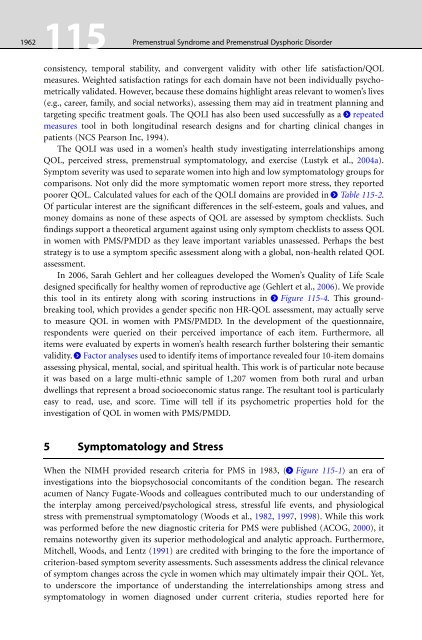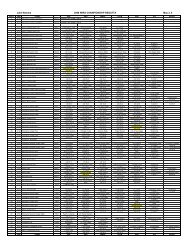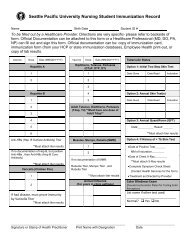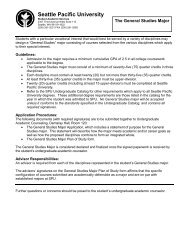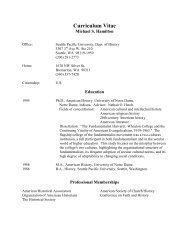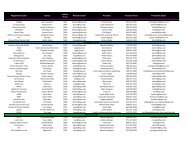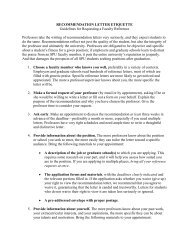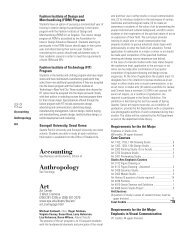115 Premenstrual Syndrome and Premenstrual Dysphoric Disorder ...
115 Premenstrual Syndrome and Premenstrual Dysphoric Disorder ...
115 Premenstrual Syndrome and Premenstrual Dysphoric Disorder ...
Create successful ePaper yourself
Turn your PDF publications into a flip-book with our unique Google optimized e-Paper software.
1962<br />
<strong>115</strong><br />
<strong>Premenstrual</strong><br />
<strong>Syndrome</strong> <strong>and</strong> <strong>Premenstrual</strong> <strong>Dysphoric</strong> <strong>Disorder</strong><br />
consistency, temporal stability, <strong>and</strong> convergent validity with other life satisfaction/QOL<br />
measures. Weighted satisfaction ratings for each domain have not been individually psychometrically<br />
validated. However, because these domains highlight areas relevant to women’s lives<br />
(e.g., career, family, <strong>and</strong> social networks), assessing them may aid in treatment planning <strong>and</strong><br />
targeting specific treatment goals. The QOLI has also been used successfully as a > repeated<br />
measures tool in both longitudinal research designs <strong>and</strong> for charting clinical changes in<br />
patients (NCS Pearson Inc, 1994).<br />
The QOLI was used in a women’s health study investigating interrelationships among<br />
QOL, perceived stress, premenstrual symptomatology, <strong>and</strong> exercise (Lustyk et al., 2004a).<br />
Symptom severity was used to separate women into high <strong>and</strong> low symptomatology groups for<br />
comparisons. Not only did the more symptomatic women report more stress, they reported<br />
poorer QOL. Calculated values for each of the QOLI domains are provided in > Table <strong>115</strong>-2.<br />
Of particular interest are the significant differences in the self-esteem, goals <strong>and</strong> values, <strong>and</strong><br />
money domains as none of these aspects of QOL are assessed by symptom checklists. Such<br />
findings support a theoretical argument against using only symptom checklists to assess QOL<br />
in women with PMS/PMDD as they leave important variables unassessed. Perhaps the best<br />
strategy is to use a symptom specific assessment along with a global, non-health related QOL<br />
assessment.<br />
In 2006, Sarah Gehlert <strong>and</strong> her colleagues developed the Women’s Quality of Life Scale<br />
designed specifically for healthy women of reproductive age (Gehlert et al., 2006). We provide<br />
this tool in its entirety along with scoring instructions in > Figure <strong>115</strong>-4. This groundbreaking<br />
tool, which provides a gender specific non HR-QOL assessment, may actually serve<br />
to measure QOL in women with PMS/PMDD. In the development of the questionnaire,<br />
respondents were queried on their perceived importance of each item. Furthermore, all<br />
items were evaluated by experts in women’s health research further bolstering their semantic<br />
validity. > Factor analyses used to identify items of importance revealed four 10-item domains<br />
assessing physical, mental, social, <strong>and</strong> spiritual health. This work is of particular note because<br />
it was based on a large multi-ethnic sample of 1,207 women from both rural <strong>and</strong> urban<br />
dwellings that represent a broad socioeconomic status range. The resultant tool is particularly<br />
easy to read, use, <strong>and</strong> score. Time will tell if its psychometric properties hold for the<br />
investigation of QOL in women with PMS/PMDD.<br />
5 Symptomatology <strong>and</strong> Stress<br />
When the NIMH provided research criteria for PMS in 1983, (> Figure <strong>115</strong>-1) an era of<br />
investigations into the biopsychosocial concomitants of the condition began. The research<br />
acumen of Nancy Fugate-Woods <strong>and</strong> colleagues contributed much to our underst<strong>and</strong>ing of<br />
the interplay among perceived/psychological stress, stressful life events, <strong>and</strong> physiological<br />
stress with premenstrual symptomatology (Woods et al., 1982, 1997, 1998). While this work<br />
was performed before the new diagnostic criteria for PMS were published (ACOG, 2000), it<br />
remains noteworthy given its superior methodological <strong>and</strong> analytic approach. Furthermore,<br />
Mitchell, Woods, <strong>and</strong> Lentz (1991) are credited with bringing to the fore the importance of<br />
criterion-based symptom severity assessments. Such assessments address the clinical relevance<br />
of symptom changes across the cycle in women which may ultimately impair their QOL. Yet,<br />
to underscore the importance of underst<strong>and</strong>ing the interrelationships among stress <strong>and</strong><br />
symptomatology in women diagnosed under current criteria, studies reported here for


